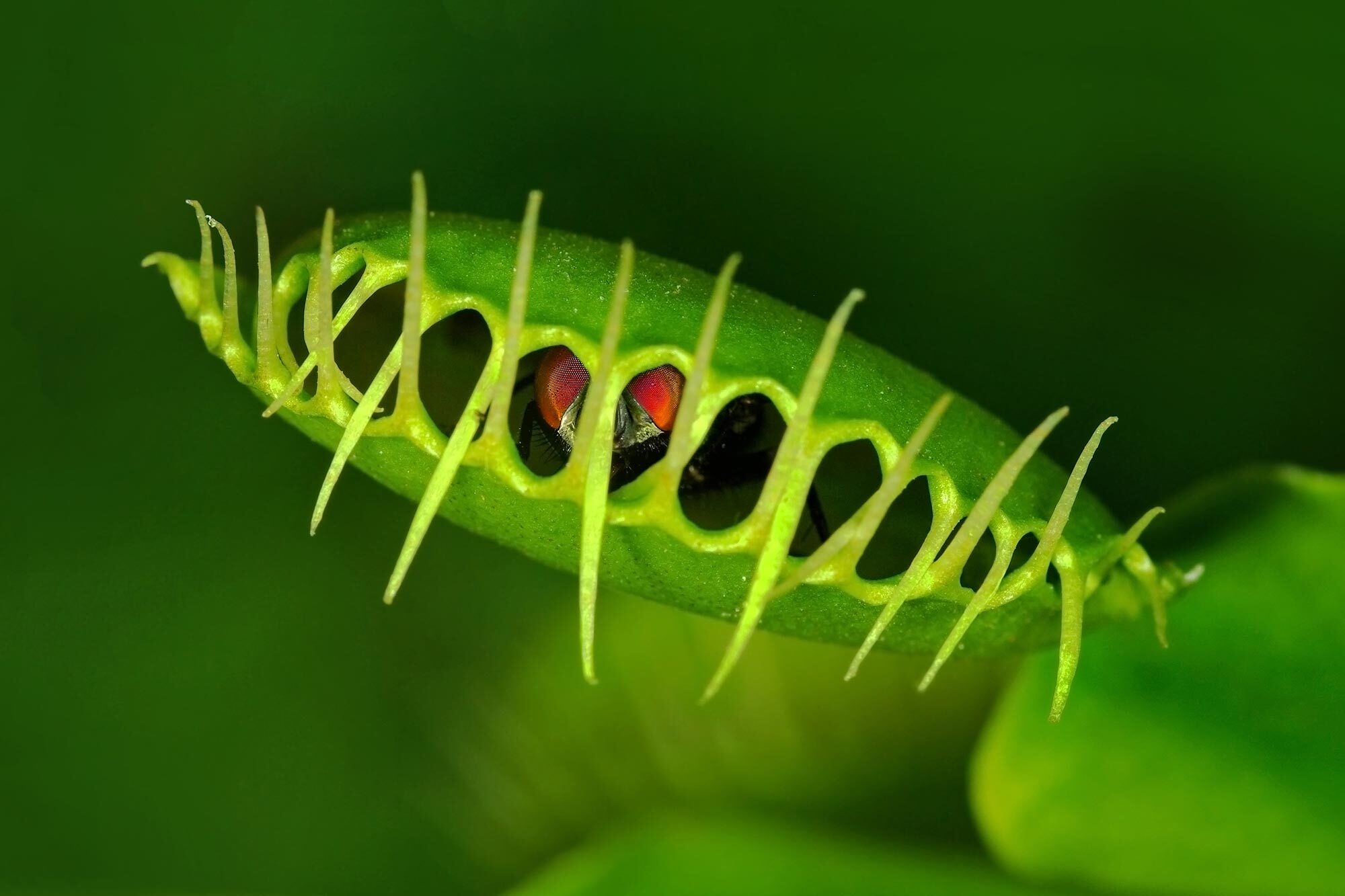
Did you know that some plants eat meat? That's right! Carnivorous plants have evolved to trap and digest insects and other small creatures. These fascinating plants use various methods to catch their prey, from sticky surfaces to snap traps. Why do they do this? It's mainly because they grow in nutrient-poor soils and need extra nutrients to survive. How do they work? Each type has its own unique way of luring, capturing, and digesting its prey. Want to learn more? Here are 50 amazing facts about these incredible plants that will leave you in awe of their survival tactics and adaptations.
Key Takeaways:
- Carnivorous plants have evolved diverse trapping mechanisms to capture prey, from snap traps to suction traps. They thrive in nutrient-poor environments and play a crucial role in their ecosystems.
- Conservation efforts are vital to protect carnivorous plants from habitat loss, illegal collection, and climate change. Public awareness and community involvement are essential for their survival.
What is Plant Carnivory?
Plant carnivory is a fascinating adaptation where plants derive nutrients by trapping and consuming animals, typically insects. These plants have evolved unique mechanisms to survive in nutrient-poor environments.
- Carnivorous plants have evolved at least nine times independently across different plant families.
- Charles Darwin was one of the first scientists to study carnivorous plants extensively.
- Venus flytrap is one of the most well-known carnivorous plants, native to subtropical wetlands in the United States.
- Pitcher plants have modified leaves that form a deep cavity filled with digestive fluid.
- Sundews use sticky glandular hairs on their leaves to trap and digest insects.
- Bladderworts are aquatic carnivorous plants that use bladder-like traps to capture tiny aquatic prey.
- Butterworts have greasy leaves that trap insects, which are then digested by enzymes.
- Nepenthes species, also known as tropical pitcher plants, can grow very large and capture small vertebrates.
- Carnivorous plants often grow in bogs, swamps, and other nutrient-poor environments.
- Digestive enzymes in carnivorous plants break down prey into nutrients that the plant can absorb.
How Do Carnivorous Plants Trap Their Prey?
Carnivorous plants have developed various trapping mechanisms to capture their prey. These mechanisms are as diverse as the plants themselves.
- Snap traps like the Venus flytrap close rapidly when trigger hairs are touched.
- Pitfall traps in pitcher plants lure insects with nectar before they fall into a pool of digestive enzymes.
- Flypaper traps in sundews and butterworts use sticky mucilage to ensnare insects.
- Suction traps in bladderworts create a vacuum to suck in prey when trigger hairs are touched.
- Lobster-pot traps in some pitcher plants force prey to move towards a digestive chamber through inward-pointing hairs.
- Corkscrew plants use twisted tubular leaves to trap and digest prey.
- Brocchinia reducta is a bromeliad that uses a combination of pitfall and flypaper traps.
- Heliamphora species, also known as sun pitchers, use pitfall traps with a small opening to capture prey.
- Catapult-flypaper traps in some sundews fling insects onto sticky surfaces.
- Aquatic traps in bladderworts are among the fastest known plant movements, capturing prey in milliseconds.
Nutrient Absorption and Digestion
Carnivorous plants have specialized structures and processes for digesting prey and absorbing nutrients. These adaptations are crucial for their survival in nutrient-poor habitats.
- Digestive glands in carnivorous plants secrete enzymes like proteases and phosphatases.
- Absorptive cells in the digestive glands take up the nutrients released from the prey.
- Venus flytraps can reopen their traps after digestion to capture more prey.
- Pitcher plants often have mutualistic relationships with bacteria that help break down prey.
- Sundews can move their tentacles to increase contact with trapped prey.
- Bladderworts absorb nutrients directly through their bladder walls.
- Butterworts secrete both digestive enzymes and antimicrobial compounds.
- Nepenthes species have specialized zones in their pitchers for different stages of digestion.
- Carnivorous plants can absorb nitrogen, phosphorus, and other essential nutrients from their prey.
- Some species can switch between carnivorous and non-carnivorous modes depending on nutrient availability.
Evolution and Diversity of Carnivorous Plants
The evolution of carnivorous plants is a testament to the incredible adaptability of life. These plants have developed a wide range of forms and functions to thrive in challenging environments.
- Carnivory in plants likely evolved as a response to nutrient-poor soils.
- There are over 600 species of carnivorous plants worldwide.
- The largest carnivorous plant is the Nepenthes rajah, which can trap small mammals.
- Some carnivorous plants have evolved to capture specific types of prey.
- Carnivorous plants are found on every continent except Antarctica.
- The oldest known carnivorous plant fossils date back to the Cretaceous period.
- Some species have lost their carnivorous traits over time due to changes in their environment.
- Hybridization between different species of carnivorous plants can lead to new forms.
- Carnivorous plants often have brightly colored traps to attract prey.
- Some species have evolved mutualistic relationships with animals, such as ants, that help them capture prey.
Conservation and Threats
Carnivorous plants face numerous threats in the wild, including habitat destruction and climate change. Conservation efforts are crucial to preserving these unique species.
- Many carnivorous plants are endangered due to habitat loss.
- Illegal collection for the horticultural trade poses a significant threat to wild populations.
- Climate change affects the delicate balance of the ecosystems where these plants thrive.
- Conservation programs aim to protect and restore habitats for carnivorous plants.
- Botanical gardens play a vital role in the conservation of carnivorous plants.
- Some species are protected by international laws and regulations.
- Public awareness and education are essential for the conservation of carnivorous plants.
- Research on carnivorous plants helps inform conservation strategies.
- Ex situ conservation involves growing plants in controlled environments to preserve genetic diversity.
- Community involvement in conservation efforts can make a significant impact on the survival of these fascinating plants.
The Fascinating World of Carnivorous Plants
Carnivorous plants are more than just oddities of nature. These fascinating organisms have adapted to thrive in nutrient-poor environments by developing unique mechanisms to trap and digest prey. From the iconic Venus flytrap to the lesser-known bladderwort, each species showcases a remarkable blend of beauty and brutality. Understanding these plants not only broadens our knowledge of botany but also highlights the incredible diversity of life on Earth. Whether you're a seasoned botanist or a curious nature enthusiast, exploring the world of carnivorous plants offers endless wonder and discovery. So next time you see a seemingly innocent plant, remember, it might just be a cunning predator in disguise. Keep an eye out, and who knows, you might spot one of these incredible plants in the wild!
Frequently Asked Questions
Was this page helpful?
Our commitment to delivering trustworthy and engaging content is at the heart of what we do. Each fact on our site is contributed by real users like you, bringing a wealth of diverse insights and information. To ensure the highest standards of accuracy and reliability, our dedicated editors meticulously review each submission. This process guarantees that the facts we share are not only fascinating but also credible. Trust in our commitment to quality and authenticity as you explore and learn with us.


